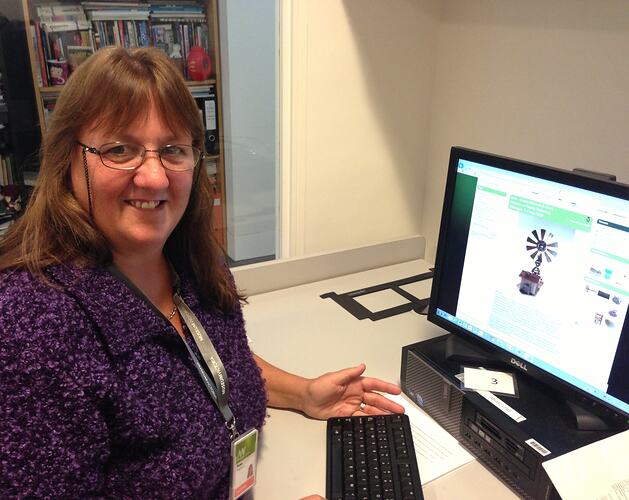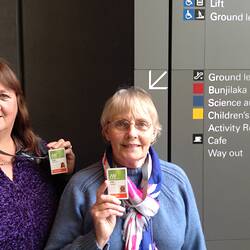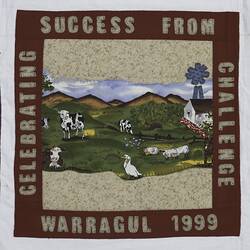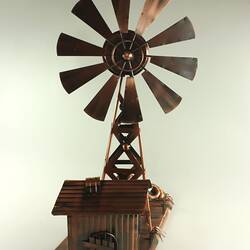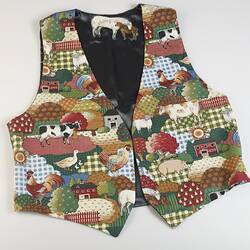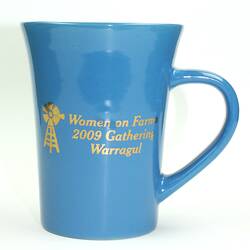My name is Rosa Wedmore. I grew up in Cranbourne, Victoria. My family is from Germany. My parents only had a house block but had many animals including milking cows, rabbits, goats, chickens. They were very self-sufficient. This began my journey for keeping animals.
My husband grew up on a milking farm in Officer. We had a small block and purchased some cattle. Not really knowing much, I saw in the local paper that they were running a farm skills course in Warragul. This is where my association with the Warragul group of Women on Farms began.
I became involved with the Warragul group running a Gathering. This then introduced me to the people from all over Victoria who enjoyed attending this annual gathering. I have now attended 15 Gatherings and hope to attend many more.
1. How did you get involved with volunteering at Museum Victoria? Can you remember what your first day of volunteering was like?
Museum Victoria had a lot of images and objects from the 20 years of Gatherings held in Victoria. These needed to be identified and catalogued so that they could be put on the Web for the world to see. As I had now attended 12 such Gatherings I thought that I could contribute to this works. My first day volunteering was in May of 2011. As a country girl I didn't have much experience in catching trains and trams. So negotiating public transport was the first challenge. Museum Victoria is a maze of rooms and cubicles. Getting my volunteer pass and computer passwords were our first task. Meeting others doing similar projects was a good education on what was expected.
2. What have been the highlights of working at Museum Victoria and can you tell us what sorts of things you have been working on?
The knowledge I have acquired about the workings of Museum Victoria has given me a greater understanding of the information and history that is available. I have seen into the bowels of the museum and seen the artefacts that this place holds. I have been working on identification of people and places in photographs that have taken over the 20 year period of Gatherings.
3. What is your favourite object in the WoFG collection? Please tell us why and a little bit about it.
My favourite object in the collection is the windmill that was presented to Museum Victoria as the icon of the 2009 Warragul Gathering. This object was purchased by me at a gift store in Yarragon, and represented the theme for our Gathering, 'Water our Future'.
4. What is your favourite image in the WoFG collection? Please tell us why and a little bit about it.
I don't have one favourite image that I can choose. But I do like the many involving our Warragul group enjoying the activities involved in the Gatherings; one with friend Beryl Taylor with her tiara head wear, which we wore to identify ourselves; the gumboots painted by Joan Templar that she could take home; the many breeds of cattle that have been on show; being involved in making pizza at the local shop or tasting the produce at the olive farm.
5. Why is the history of the WoFG important? What can it tell future generations about rural Australia?
History is the foundation of our living and working lives. WoFG is a snap shot of what women of rural Victoria endure in everyday life to survive as well as enjoy. As technology develops and computerised machinery becomes more involved in the running of farms, we must always remember that the basics are still needed. The health and wellbeing of farmer and their investment.
6. How is history celebrated at the WoFG Gatherings?
The annual WoFG is a place where women of all ages come together to tell their stories. To share their lives, be it success of their hard work or of heart break, as in the battle with seasonal change. The Gatherings are a place that teach you that life repeats ,and that if one person can survive then the next person can too.
More Information
-
Keywords
-
Localities
-
Authors
-
Article types
